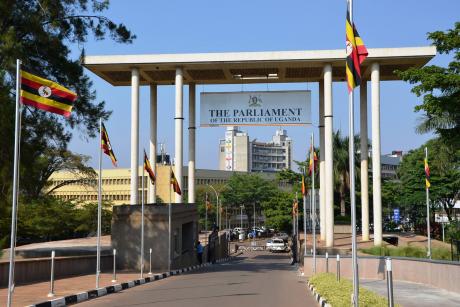Financial inclusion refers to where individuals and businesses have access to useful and affordable financial products and services that meet their needs and are delivered in a responsible and sustainable way.
It entails the pursuit of making financial services accessible at affordable costs to all individuals and businesses, regardless of net worth and size respectively.
This is why Bank of Uganda a few years ago in collaboration with Ministry of Finance launched the National Financial Inclusion Strategy (2017 – 2019) to run a financial inclusion project aimed at increasing access to financial services and empowering users of financial services to make rational decisions in their personal finances so as to contribute to economic growth of not just themselves but Uganda in general.
At the core of this financial inclusion project is the realization that Financial Literacy is critical in ensuring that consumers make informed financial and economic decisions that ultimately drive them out of poverty.
Most of us fail in business because we are not conversant with personal financial management and some of the financial products available are difficult to understand at best and too expensive to access at worst.
This is where financial inclusion comes in to address and proffer solutions to the constraints that exclude people from participating in the financial sector.
Recently, on 10th July 2019 at Kampala Serena Hotel, I attended a financial inclusion breakfast meeting organized by Financial Sector Deepening Uganda (FSDU) where Bank of Uganda governor; Professor Tumusiime Mutebile emphasized the fact that financial inclusion statistics count most when they reflect the unlocking of economic potential through harnessing national resources by creating jobs, reducing poverty and fostering prosperity for all citizens.
Uganda’s economy has developed significantly in recent decades but the rural communities are still left behind largely because of the high cost of providing financial services.
Many financial institutions lack incentives to serve poorer communities because of lower revenues brought about by the fact that poor households have limited investment opportunities and transact in small amounts and largely ignorant about the financial sector.
Moreover, this is a market segment of 14.1 million Ugandans which ideally is a huge financial market to tap into by financial institutions.
Almost half (48%; 8.8 million) of the adult population rely mainly on farming activities for money to cover their expenses and a large number of them rely on family members or friends for financial advice.
Bank of Uganda aims at providing financial literacy to all Ugandans in order to improve their economic and investment decision making through engaging more than 150 stakeholders that include government bodies, banks, media, consumer organizations, private sector associations and non-government organizations (NGOs).
Improved financial literacy has caused and will continue to cause the growth of the credit sector in Uganda.
In 2018 Bank lending topped Shs13.2 trillion which was a 12.2% increase from the previous year.
Most of the loans were for crops, livestock and poultry production which grew by 41.7% and credit to the retail trade sector which increased by 21.2%.
This credit growth is indicative of the improved understanding of the money market.
Also Leveraging on digital technology to access Ugandans that are rather difficult and costly to reach has led to a significant increase in financial literacy and inclusion in Uganda.
Digital technology which is essentially ownership of a mobile and internet connectivity has been growing in Uganda and financial institutions have been quick to realize the potential for economic value and invested steadily.
Mobile money services were introduced in 2009 and have since grown exponentially.
By the end of 2018, telecoms expected to handle in excess of about Shs871b in mobile money transactions especially after the government revised Excise Duty from 1% to 0.5%.
More than half of Uganda’s adult population now has access to an account at a formal financial institution and the entry coupled with quick penetration of mobile money is the main reason for the increase, having allowed over 9 million Ugandans to conduct financial transactions.
However, there is still a big gap to fill in bridging the gap of financial inclusion, about 16% of the adult Ugandans keep their savings in formal deposit-taking institutions, like banks, microfinance institutions, and savings and credit institutions.
We still have 60% of adult Ugandans still keeping their monies at home and in the form of assets such as animals.
Therefore, in a nutshell, the successful implementation of the financial literacy strategy is not only in the interest of the consumers of financial services, the Government also stands to benefit from a population that is financially capable and therefore more productive, financial institutions benefit from increased uptake of financial services and the economy as a whole will benefit from a deeper and broader financial inclusive system.
The writer is a Communications Assistant at Government Citizen Interaction Centre (GCIC), Ministry of ICT and National Guidance / @MAGEZIKIRIINJJU







Comments